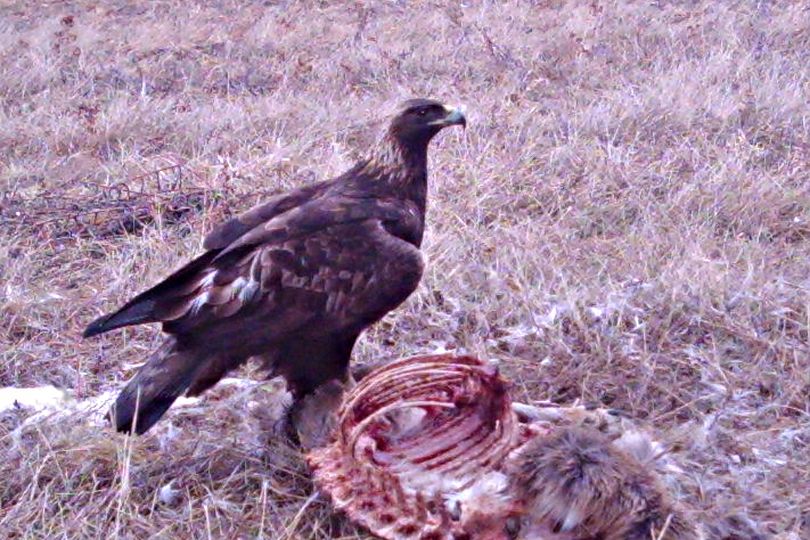Eagles join feast of region’s winter kill

WILDLIFE WATCHING -- Mount Spokane area birder Ron Dexter knew something was up -- or more likely down -- when he a lot of raven activity above his home last month.
When he hiked up to investigate, he was not surprised to find the carcass of a dead deer. But he was entrigued at the collection of scavengers it attracted, including coyotes that had departed, their places at the "dinner table" filled by a half dozen ravens, a few magpies, several bald eagles and an immature golden eagle.
His tip for distinguishing a young golden from an immature bald eagle: A golden has a central wing white markings and the upper half of the tail is white. (See a more detailed explanation by clicking "continue reading" at the bottom.)
"I returned later to set up my remote sensor camera. Over the next few weeks I got photos of up to four bald eagles at a time and two golden eagles, one juvenile and the adult in the photo (above).
In addition there were up to two coyotes, a red-tailed hawk, ravens and magpies. Also, a few deer investigated the scene."
Note: Golden eagles are fairly rare in Spokane County and when they do show up they can be mistaken for immature bald eagles. However, Dexter said he usually see at least one every winter in the foothills of Mount Spokane.
"I have never seen one here during the summertime," he said. "This indicates to me that they probably do not nest in northeastern Spokane County and are drawn here by the activity of the bald eagles that feed on the winter kill."
Dexter offers more detail in his method of distinguishing immature bald eagles from golden eagles:
The oval white circle on the bottom side of each wing of the immature golden eagle is located at the base of the secondary wing feathers starting at the base of the primary feathers. As the eagle matures, this white turns to brown.
Other ways to ID a soaring golden eagle are the dihedral of the wings, tipped up approximately 10-15 degrees whereas the bald eagle normally soars with the wings pretty flat.
The neck, head and bill of the bald eagle are much larger than a golden. When flying the bald eagle's neck, head and bill combine to protrude longer than half the length of its tail. The golden's is less than half.
